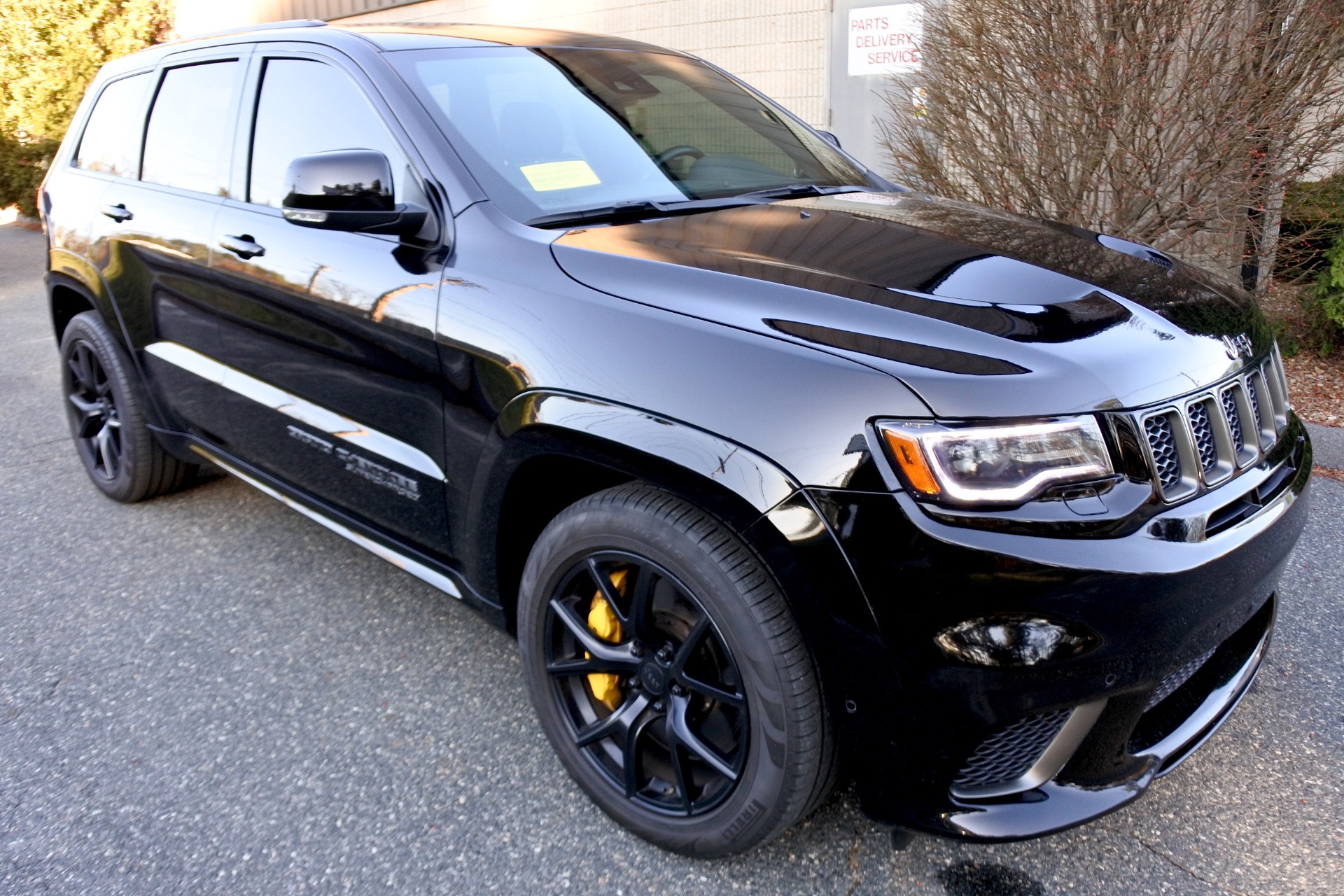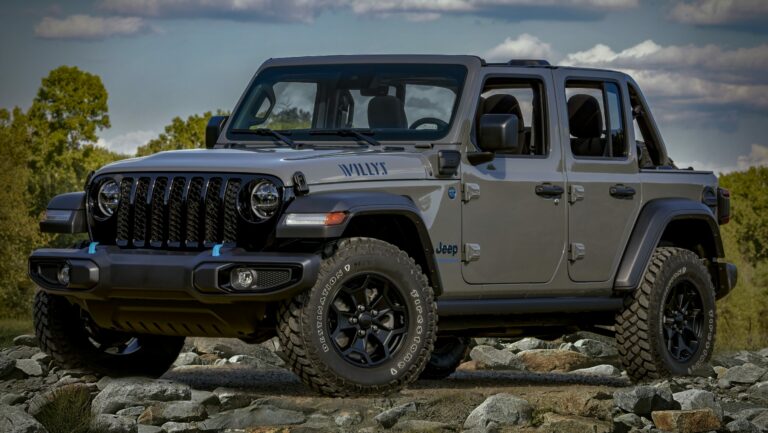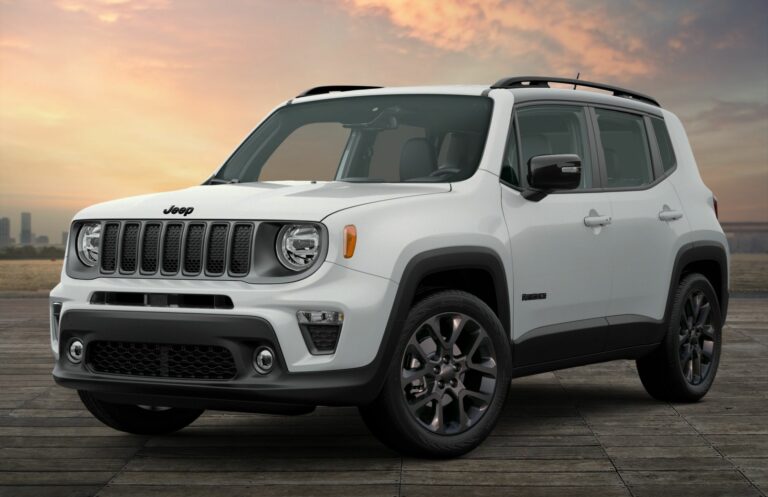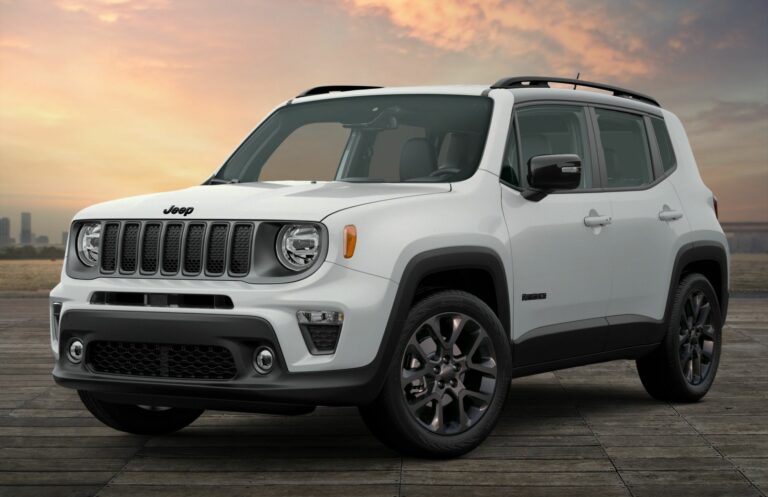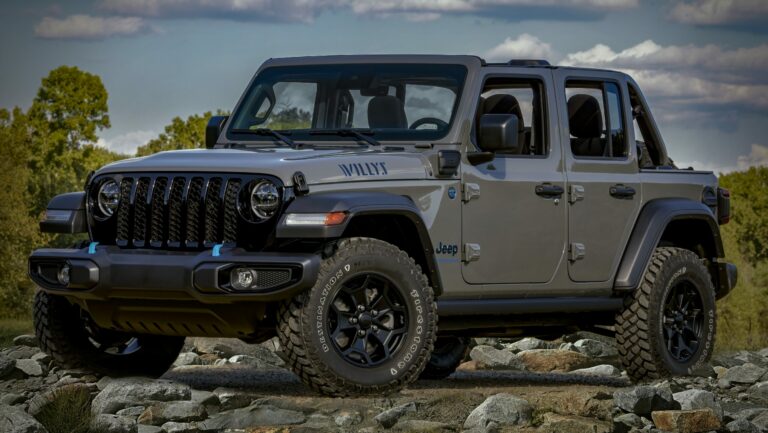The Enduring Appeal of a Used Jeep Grand Cherokee: A Comprehensive Buyer’s Guide
The Enduring Appeal of a Used Jeep Grand Cherokee: A Comprehensive Buyer’s Guide jeeps.truckstrend.com
The Jeep Grand Cherokee has long stood as an icon in the SUV landscape, celebrated for its unique blend of rugged off-road capability, refined on-road manners, and increasingly, luxurious appointments. For many, a brand-new Grand Cherokee might be out of reach, but the Jeep Grand Cherokee Used market presents an incredibly compelling alternative. Opting for a pre-owned model allows buyers to access premium features, potent powertrains, and legendary Jeep capability at a significantly reduced cost, making it a smart and popular choice for a wide range of drivers. This comprehensive guide will navigate the intricacies of buying a used Grand Cherokee, helping you make an informed decision and find the perfect vehicle to fit your needs and budget.
Why Choose a Used Jeep Grand Cherokee?
The Enduring Appeal of a Used Jeep Grand Cherokee: A Comprehensive Buyer’s Guide
The decision to purchase a Jeep Grand Cherokee Used offers a myriad of benefits that extend beyond just the initial cost savings.
- Exceptional Value: New vehicles depreciate rapidly, especially in their first few years. Buying a used Grand Cherokee means you let the first owner absorb the steepest depreciation, allowing you to acquire a well-equipped vehicle for tens of thousands less than its original MSRP.
- Proven Capability: Whether you’re tackling snowy roads, hauling a boat, or venturing off the beaten path, the Grand Cherokee’s robust chassis and advanced 4×4 systems (like Quadra-Trac and Quadra-Drive) deliver confidence-inspiring performance. These capabilities are inherent to the vehicle, regardless of its age.
- Luxury at a Lower Price Point: Later generations of the Grand Cherokee, particularly the WK2 (2011-2021), elevated the interior design and material quality significantly. High-end trims like Overland, Summit, and even SRT/Trackhawk models become attainable for buyers on a used budget, offering features like premium leather, advanced infotainment, panoramic sunroofs, and sophisticated driver-assist technologies.
- Wide Variety of Options: The Grand Cherokee has been produced for decades across multiple generations, offering a vast selection of engine choices (from efficient V6s to powerful HEMI V8s and even EcoDiesel options), trim levels, and configurations. This diversity ensures there’s a used Grand Cherokee to suit almost any preference or need.
Understanding the Generations: A Brief Overview
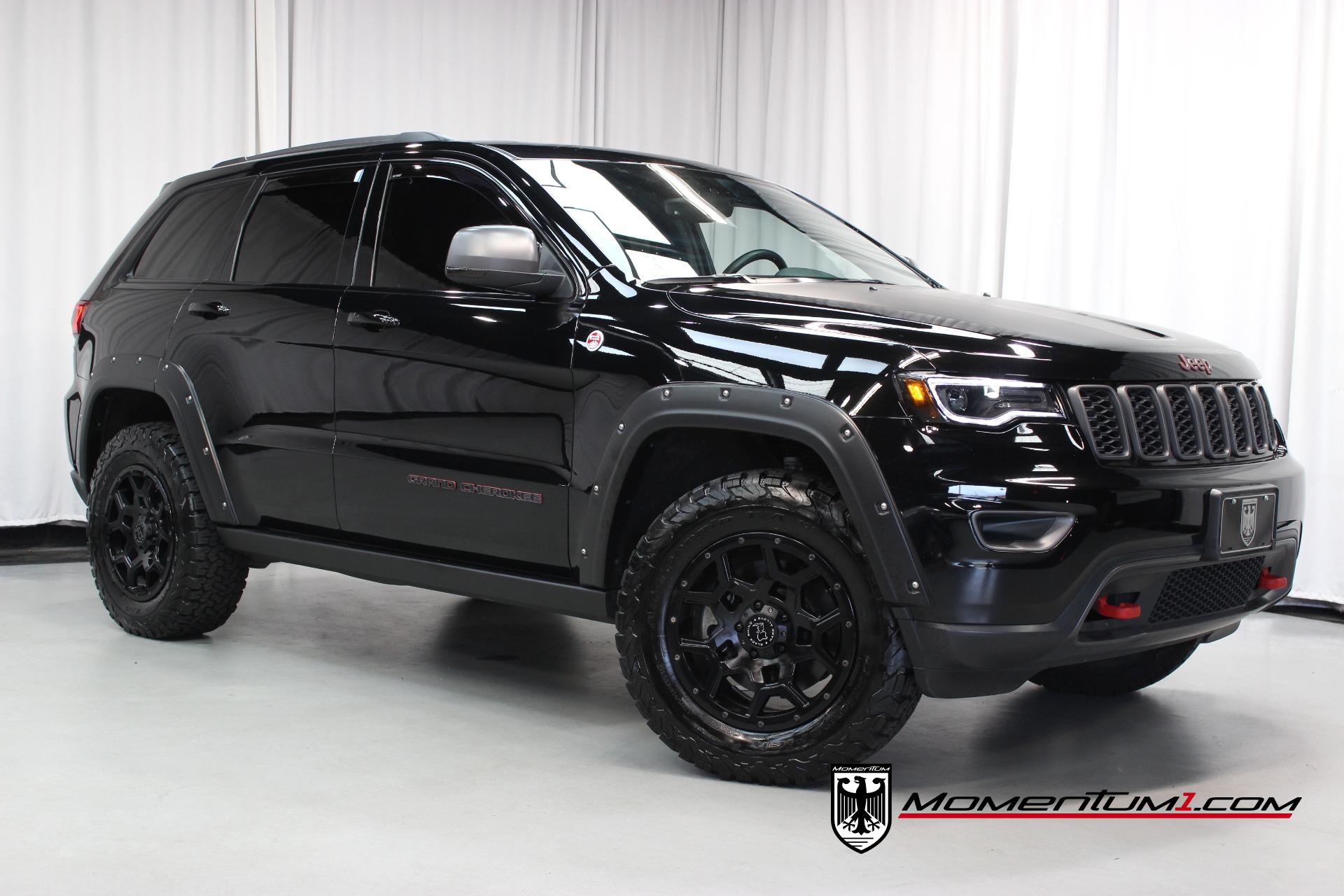
When considering a Jeep Grand Cherokee Used, it’s crucial to understand the different generations, as they represent distinct advancements in design, technology, and capability.
- WK (2005-2010): This generation marked a shift towards independent front suspension, improving on-road comfort. It retained significant off-road prowess and introduced the HEMI V8 and the SRT8 performance variant. These models are generally more affordable but may lack some modern amenities.
- WK2 (2011-2021): This is arguably the most popular and versatile generation in the used market. It brought a significantly more refined interior, sleeker exterior design, improved fuel efficiency with the Pentastar V6, and continued to offer powerful V8 options (5.7L and 6.4L HEMI, and the supercharged 6.2L in the Trackhawk). This generation saw the introduction of air suspension (Quadra-Lift) and advanced safety features, making it a highly desirable used vehicle.
- WL (2022-Present): The newest generation offers even more luxury, technology, and a longer wheelbase option (Grand Cherokee L). While less common in the used market due to its recency, it represents the pinnacle of Grand Cherokee evolution and will eventually become a more prevalent used option.

For most used buyers, the WK2 generation (2011-2021) strikes the best balance of modern features, reliability, and value.
Key Considerations When Buying a Used Grand Cherokee
Purchasing a Jeep Grand Cherokee Used requires careful consideration of several factors to ensure you’re getting a reliable vehicle.
- Condition and History are Paramount:
- VIN Check: Always obtain a vehicle history report (e.g., CarFax, AutoCheck). This will reveal accident history, odometer discrepancies, service records, and title issues.
- Service Records: Look for a consistent service history. Regular oil changes, fluid flushes, and scheduled maintenance are indicators of a well-cared-for vehicle.
- Rust: Inspect the undercarriage, wheel wells, and door sills for rust, especially if the vehicle comes from an area with harsh winters.
- Mileage and Longevity: While lower mileage is generally preferred, a Grand Cherokee with 100,000+ miles can still be a good buy if it has been meticulously maintained. High mileage often translates to a lower price, freeing up budget for potential future maintenance.
- Common Issues to Watch For:
- Air Suspension (Quadra-Lift): While providing excellent ride quality and adjustable height, components like air springs and compressors can fail, leading to costly repairs. Check for sagging, unusual noises, or warning lights.
- Electrical Gremlins: Some owners report issues with infotainment systems, power windows, or sensors. Test all electrical components thoroughly.
- Transmission: Listen for harsh shifts or delays, especially on older models or those with high mileage.
- Fluid Leaks: Inspect under the vehicle for signs of oil, coolant, or transmission fluid leaks.
- Trim Levels and Powertrain Choices:
- Trims: Laredo (base), Limited (popular, good balance), Overland (luxury features), Summit (top-tier luxury), SRT/Trackhawk (performance-focused). Your choice will heavily influence features and price.
- Engines: The 3.6L Pentastar V6 is reliable and offers decent fuel economy. The 5.7L HEMI V8 provides more power for towing and acceleration. The 6.4L and supercharged 6.2L HEMI are for performance enthusiasts. The 3.0L EcoDiesel (WK2, pre-2020) offers excellent torque and fuel economy but can have higher maintenance costs.
- 4×4 Systems: Quadra-Trac I (basic full-time 4WD), Quadra-Trac II (two-speed transfer case, low range), and Quadra-Drive II (adds electronic limited-slip differentials for superior off-road capability). Understand which system suits your needs.

The Buying Process: A Step-by-Step Guide
Successfully acquiring a Jeep Grand Cherokee Used involves a structured approach.
- Define Your Needs and Budget: Determine what features are essential (towing, off-roading, luxury, fuel economy) and set a realistic budget for purchase and potential maintenance.
- Research and Shortlist: Use online marketplaces (Autotrader, Cars.com, CarGurus), dealer websites, and private seller platforms. Filter by year, mileage, trim, and price.
- Initial Contact and Questions: Ask sellers about service history, reasons for selling, known issues, and whether a pre-purchase inspection is allowed.
- Visual Inspection: Before a test drive, do a thorough walk-around. Check for body damage, tire wear, fluid leaks, and interior condition.
- Test Drive: Pay attention to engine noise, transmission shifts, steering feel, brake performance, and any warning lights. Test all features: A/C, radio, windows, sunroof, infotainment.
- Pre-Purchase Inspection (PPI): This is CRUCIAL. Have an independent, trusted mechanic (ideally one familiar with Jeeps) inspect the vehicle before purchase. They can identify hidden issues that you might miss. This small investment can save you thousands down the line.
- Negotiation: Armed with your research and PPI report, negotiate the price. Be prepared to walk away if the deal isn’t right.
- Paperwork: Ensure all title, registration, and sales documents are properly completed and transferred.
Owning a Used Grand Cherokee: Maintenance and Longevity Tips
Once you’ve brought your Jeep Grand Cherokee Used home, proactive maintenance is key to its longevity and reliability.
- Adhere to the Maintenance Schedule: Follow Jeep’s recommended service intervals for oil changes, tire rotations, fluid checks, and filter replacements.
- Address Issues Promptly: Don’t ignore warning lights or unusual noises. Addressing small problems early can prevent them from becoming major, costly repairs.
- Fluid Checks: Regularly check engine oil, transmission fluid, coolant, power steering fluid, and brake fluid levels.
- Tire Care: Maintain proper tire pressure and rotate tires regularly to ensure even wear.
- Underbody Care: If you live in a region with road salt, consider regular undercarriage washes to prevent rust.
- Find a Reputable Mechanic: Seek out a mechanic with good reviews and experience with Jeep vehicles, especially if your Grand Cherokee has advanced systems like Quadra-Lift.
Challenges and Solutions
While a Jeep Grand Cherokee Used offers great value, it’s not without potential challenges.
- Challenge: Fuel Economy (Especially V8s): The powerful HEMI V8s, while exhilarating, are thirsty.
- Solution: Consider the Pentastar V6 for better fuel economy, or budget accordingly for fuel costs.
- Challenge: Complex Repairs (Air Suspension, Advanced Electronics): High-trim models with advanced features can incur expensive repairs if components like the air suspension fail.
- Solution: Get a thorough PPI. Budget for potential repairs, or consider an extended warranty, especially for models with air suspension. Research common failures for the specific year/trim you’re interested in.
- Challenge: Resale Value: While depreciation has already hit a used model, certain issues can further impact future resale.
- Solution: Maintain excellent service records, keep the vehicle clean, and address issues promptly to preserve its value.
Jeep Grand Cherokee Used Price Table
Prices for a Jeep Grand Cherokee Used vary significantly based on year, mileage, trim level, condition, engine, 4×4 system, and geographical location. The table below provides estimated price ranges for popular generations and trims. These are general estimates and actual prices may differ.
| Generation (Year Range) | Trim Level (Engine) | Typical Mileage Range | Estimated Price Range (USD) | Key Features/Notes |
|---|---|---|---|---|
| WK (2005-2010) | Laredo (V6/V8) | 120,000 – 180,000+ | $4,000 – $8,000 | Entry-level, basic features, robust platform. Good for budget buyers. |
| Limited/Overland (V8) | 100,000 – 160,000 | $6,000 – $10,000 | More features like leather, heated seats, navigation (if equipped). V8 power. | |
| SRT8 (6.1L V8) | 80,000 – 140,000 | $12,000 – $20,000 | High-performance variant, unique styling, powerful engine. | |
| WK2 (2011-2016) | Laredo (3.6L V6) | 80,000 – 150,000 | $9,000 – $15,000 | Modernized interior, Pentastar V6 efficiency. Solid daily driver. |
| Limited/Overland (V6/V8) | 70,000 – 130,000 | $12,000 – $20,000 | Popular choice. Offers leather, Uconnect, optional air suspension, advanced safety. | |
| Summit (V6/V8) | 60,000 – 120,000 | $16,000 – $25,000 | Top-tier luxury, premium materials, more standard features. | |
| SRT (6.4L V8) | 50,000 – 100,000 | $25,000 – $40,000 | Serious performance SUV, track-focused capabilities. | |
| WK2 (2017-2021) | Laredo (3.6L V6) | 40,000 – 90,000 | $18,000 – $25,000 | Fresher styling, improved infotainment, standard Apple CarPlay/Android Auto on later models. |
| Limited/Overland (V6/V8) | 30,000 – 80,000 | $22,000 – $35,000 | Excellent blend of features and value. Often includes desirable tech and comfort options. | |
| Summit (V6/V8) | 25,000 – 70,000 | $28,000 – $40,000 | Highest luxury, often with advanced driver-assist systems and premium audio. | |
| Trackhawk (6.2L Supercharged) | 20,000 – 60,000 | $55,000 – $80,000+ | Extreme performance SUV, very rare and highly sought after. Prices vary wildly based on condition and mileage. | |
| WL (2022-Present) | Laredo/Limited (V6) | 10,000 – 40,000 | $35,000 – $45,000+ | Newer body style, more advanced tech, often still under factory warranty. Prices will be higher due to recency. |
| Overland/Summit (V6/V8) | 5,000 – 30,000 | $45,000 – $65,000+ | Latest features, refined interior, higher price point as they are still very new in the used market. |
Frequently Asked Questions (FAQ) about Used Jeep Grand Cherokee
Q1: Is a used Grand Cherokee reliable?
A1: Reliability can vary by year and maintenance history. The Pentastar V6 engine is generally considered very reliable. Models with air suspension or complex electronics may require more attention. A thorough pre-purchase inspection and a good service history are key indicators of reliability.
Q2: What’s the best year to buy a used Grand Cherokee?
A2: For a balance of modern features, value, and reliability, the 2014-2020 WK2 models are often recommended. They benefited from mid-cycle refreshes and have had enough time for common issues to be known and addressed.
Q3: What’s the difference between Quadra-Trac and Quadra-Drive?
A3: Quadra-Trac I is a basic full-time 4WD system. Quadra-Trac II adds a two-speed transfer case with a low range for more serious off-roading. Quadra-Drive II is the most advanced, adding electronic limited-slip differentials at both axles for superior traction in extreme conditions.
Q4: Are the V8 engines worth the extra fuel cost?
A4: If you need to tow heavy loads, desire strong acceleration, or simply enjoy the power, the V8s are worth it. For general commuting or lighter duties, the V6 offers sufficient power and better fuel economy.
Q5: How much does maintenance typically cost for a used Grand Cherokee?
A5: Routine maintenance is comparable to other large SUVs. However, specific repairs, especially for issues like air suspension components or certain electrical problems, can be costly. Budgeting $1,000-$2,000 per year for maintenance and potential repairs is a reasonable estimate for a well-maintained used model.
Q6: Should I consider an extended warranty?
A6: For high-mileage models or those with complex features like air suspension, an extended warranty can provide peace of mind, potentially saving you significant money on major repairs. Research reputable warranty providers and understand what is covered.
Conclusion
The Jeep Grand Cherokee Used market offers an unparalleled opportunity to own a versatile, capable, and increasingly luxurious SUV without the new car price tag. By understanding the different generations, diligently inspecting potential purchases, prioritizing a pre-purchase inspection, and committing to proactive maintenance, buyers can unlock tremendous value. While there are considerations regarding fuel economy and potential repair costs for certain features, the enduring appeal of the Grand Cherokee’s blend of off-road prowess and on-road comfort makes it a truly compelling used vehicle choice. With careful research and a smart buying strategy, your used Grand Cherokee can deliver years of adventurous and comfortable driving.
